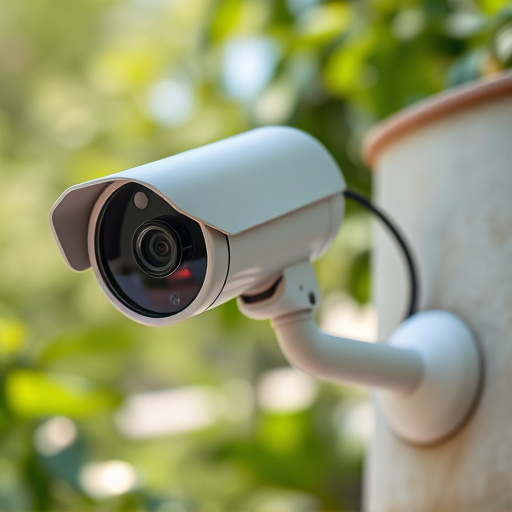Dummy security cameras offer a cost-effective way to enhance property security without complex installations. With various power options—from battery-operated for flexibility to hardwired for reliable supply—they should be strategically placed at entry points, visible outdoor areas, and potential crime spots. Solar-powered models provide a sustainable alternative for remote areas. Understanding these power requirements is crucial for selecting the best places to install dummy cameras for optimal security without requiring a costly alarm system.
Unlocking Security: Exploring Dummy Camera Power and Installation Strategies
Dummy security cameras, subtle yet powerful deterrents, offer enhanced safety without the cost of real surveillance. This guide delves into the world of dummy camera power options, exploring strategies for optimal placement both indoors and outdoors. From understanding their unique requirements to leveraging innovative technologies like solar power and wireless charging, we uncover the secrets to deploying a robust and future-proofed dummy camera system. Discover the best places to install these versatile devices, enhancing your security without compromising aesthetics.
- Understanding Dummy Security Cameras and Their Power Requirements
- – What are dummy security cameras?
- – How do they differ from real cameras?
- – Basic power options for dummy cameras
Understanding Dummy Security Cameras and Their Power Requirements
Dummy security cameras, often used as deterrents or for decorative purposes, mimic the appearance of functional surveillance equipment. They are a popular choice for homeowners and business owners looking to enhance their property’s security without the cost and complexity of installing real cameras. These dummy cameras come with various power options, which is an essential consideration when deciding on the best places to install them.
The most common power sources include battery-operated models, which are ideal for temporary or discreet installations, and hardwired cameras connected to a power outlet. Battery-powered units offer flexibility and can be placed in challenging locations without the need for electrical alterations. On the other hand, hardwired cameras provide a more reliable power supply, making them suitable for best places with consistent access to electricity, such as entryways, windows, or outdoor areas where clear visibility is crucial. Understanding these power requirements ensures you choose the right dummy camera for each location, enhancing the overall security of your property.
– What are dummy security cameras?
Dummy security cameras, also known as fake or mock surveillance cameras, are a clever and cost-effective way to enhance home or business security. These devices appear identical to real security cameras but lack the electronic components needed for actual video recording or monitoring. They serve as a powerful deterrent against potential intruders, as criminals often avoid locations with visible security measures.
The best places to install dummy cameras include entry points such as doors and windows, as well as areas prone to theft or vandalism. Strategically placing these cameras can significantly deter burglars without the need for expensive alarm systems. They are especially useful for homes or businesses wanting to appear secure without committing to a full-scale surveillance setup.
– How do they differ from real cameras?
Dummy security cameras, also known as fake or decoy cameras, are a popular choice for deterring potential criminals and enhancing home or business security. Unlike real cameras, they do not capture actual footage but serve as visual deterrents. These artificial devices closely resemble their functional counterparts, featuring realistic designs with lenses, casing, and connectors, making them nearly indistinguishable from genuine security cameras.
The primary difference lies in their functionality—dummy cameras do not have recording or streaming capabilities. They are carefully crafted replicas designed to trick intruders into believing they are being monitored, thereby reducing the risk of crime. The best places to install these decoy cameras include entry points like doors and windows, visible outdoor areas, and locations where real cameras might be strategically placed, creating a comprehensive security illusion.
– Basic power options for dummy cameras
Dummy security cameras, despite their non-functional nature, offer a range of power options to suit various installation needs. For indoor applications, the most common choice is battery-powered operation, providing flexibility in places where accessing an electrical outlet is challenging or not feasible. These batteries can be either disposable or rechargeable, with rechargeable models becoming increasingly popular due to their cost-effectiveness and environmental benefits.
When it comes to outdoor installations, the best places to install dummy cameras often include areas with easy access to power sources like walls or fences. In such cases, hardwired cameras connected to a power supply are ideal. This option ensures a constant power flow, enabling live monitoring and easier integration into home security systems. Additionally, some models offer solar-powered alternatives, making them suitable for remote locations or environments where electrical infrastructure is lacking.
Dummy security cameras offer a cost-effective way to enhance home or business security without the need for complex wiring. With various power options available, these cameras can be strategically placed at the best locations—both indoors and outdoors—to provide comprehensive coverage. By understanding your power requirements and exploring innovative solutions like solar-powered options, you can maximize the benefits of dummy cameras while ensuring seamless installation in any setting.
